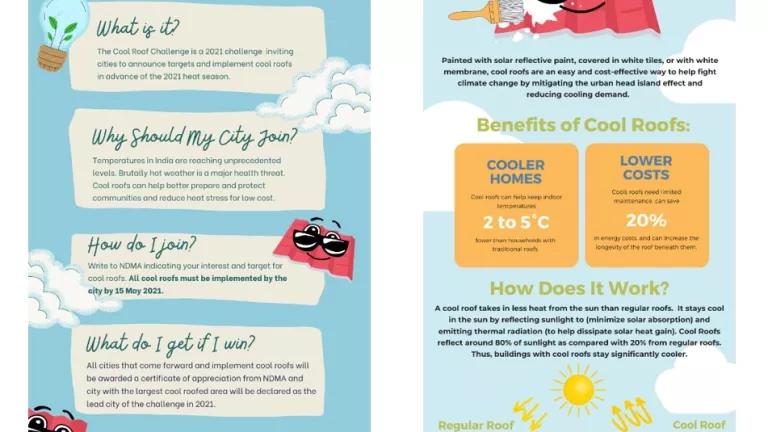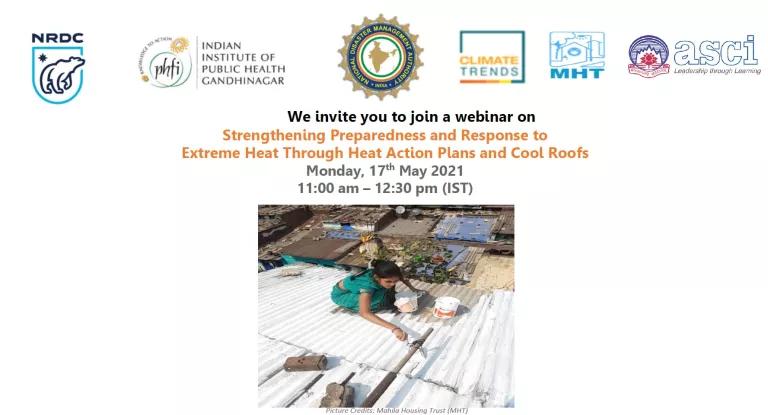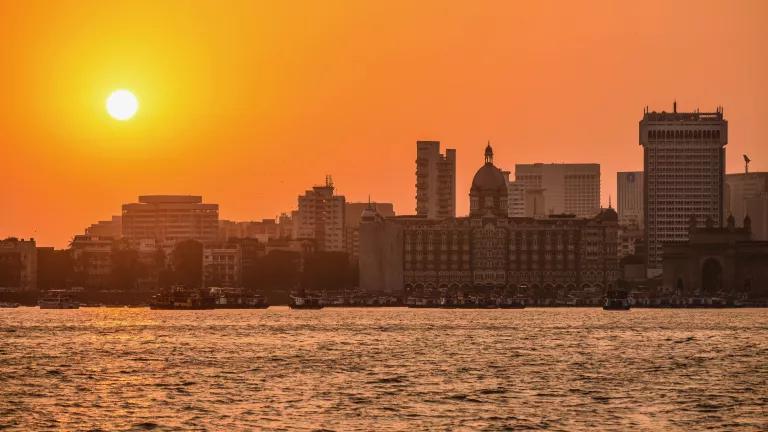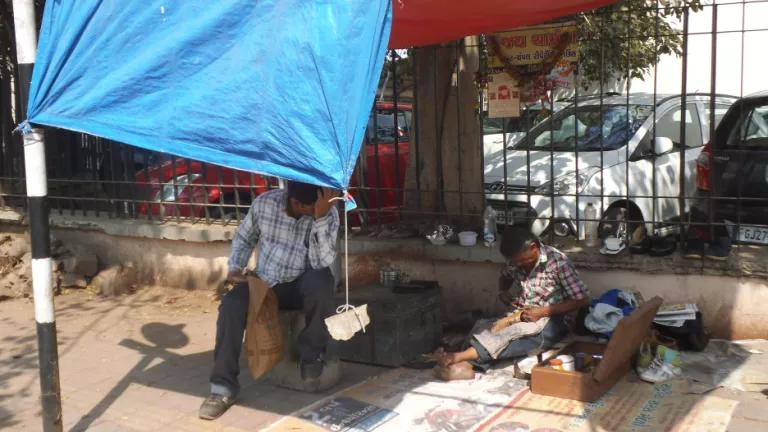Coping with Extreme Heat in the time of COVID-19
As COVID-19 cases soar to over 23 million, India’s healthcare infrastructure is being stretched to the brink. Parts of India are also fighting extreme summer heat. Extreme heat is not merely an inconvenience; it is a major global health threat and can be deadly. Protecting public health from extreme heat is more important than ever.

The Indian Government’s weather forecasting agency released its 2021 heat season forecast, warning that “above normal seasonal maximum temperatures are likely” over most of the country in the coming weeks. We know that climate change is causing longer, more frequent, and more intense heatwaves than ever before. Every year, heat claims thousands of lives. A 2019 study predicted more than 1 million deaths from heat by the next century. With COVID-19 cases in India soaring over 23 million as of date, the nation’s health infrastructure is already stretched and the rising heat is likely to exacerbate health impacts, particularly on those already vulnerable to respiratory health impacts from COVID-19. It is vital that cities implement solutions, like cool roofs, for mitigating heat risk and help avoid potential heat-related complications.
Hospitals and urban health centers, already stressed by the COVID-19 pandemic, may not have capacity for emergency response to heat-related illnesses. The push for stay-at-home lockdowns is important to try to get the crisis under control, but with 9 out of 10 homes in India without AC, that comes with its own health risks. Already, parts of India are fighting the onslaught of summer heat—as early as April 29, Delhi reached 107.8°F (42.1°C, or 3 units above normal for this time of the year). Extreme heat and the COVID-19 pandemic are converging in a devastating way for many, and the Indian government's National Disaster Management Authority (NDMA) is one of the main agencies tasked with addressing both of these crises working with the state governments.
Strategies to Combat Extreme Heat
Multiple approaches are effective in building resilience to extreme heat. NDMA has been leading states to ramp up Heat action plans (HAPs), comprehensive early warning systems and preparedness plans with the objectives of public awareness and community outreach; interagency coordination; capacity building among health care professionals; and reducing heat exposure and promoting adaptive measures. HAPs have expanded widely since they were first deployed in 2013 in the city of Ahmedabad. They now reach 23 states and over 100 cities and districts due to collaboration of NDMA, Indian Meteorological Department, and partners including the Indian Institute of Public Health-Gandhinagar and NRDC. Along with community outreach, HAPs have proven to be effective in enhancing heat resilience.
Other strategies such as cool roofs—roofs painted with solar reflective paint, covered in white tiles, or with white membranes—are an easy and cost-effective way to keep indoor temperatures lower and help address the urban heat island challenge. Since they reflect sunlight and absorb less heat, cool roofs can help keep indoor temperatures lower by 2 to 5°C as compared to traditional roofs, depending on the setting. These roofs also potentially lead to less air pollution since they save energy, especially on cooling appliances, such as fans and air conditioners.
Ahead of the heat season, NDMA launched the Heat Season 2021 Cool Roofs Challenge, which encourages cities to implement cool roofs as part of their HAPs. The deadline for cities and districts to signup is May 15th.
States and Cities Can Act
States have an opportunity to reduce extreme heat impacts by implementing heat actions and cool roofs. For example, the Telangana 2021 Heat Wave Action Plan includes a detailed strategy for installing and scaling up cool roofs for up to 300 square kilometers by 2031 in the state. Telangana’s capital city of Hyderabad has already installed 20,000 square feet of cool roofs and has included cool roofs as one of its corporate social responsibility tools.
To highlight the actions states and cities are taking to beat the heat this summer, NRDC, NDMA, and partners are hosting a webinar ‘Strengthening Preparedness and Response to Extreme Heat Through Heat Action Plans and Cool Roofs’ on 17th May 2021 at 11:00 am-12:30 pm IST, where experts will discuss recommendations and strategies for cities and states to beat the summer heat. Register here.

As India faces the devastating COVID-19 crisis, an effective public health response strategy is more important than ever before. A comprehensive public health response should incorporate solutions that respond to both near term crisis such as the COVID-19 pandemic as well as to long term stressors such as the extreme heat waves being fueled by climate change.




